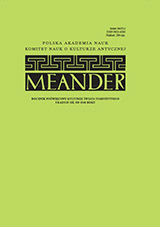
Digesta po polsku
A review of the first four volumes of the edition and Polish translation of Justinian’s Digest done by Tomasz Palmirski and a team under his guidance. The volumes contain books I–XXVII.
More...We kindly inform you that, as long as the subject affiliation of our 300.000+ articles is in progress, you might get unsufficient or no results on your third level or second level search. In this case, please broaden your search criteria.

A review of the first four volumes of the edition and Polish translation of Justinian’s Digest done by Tomasz Palmirski and a team under his guidance. The volumes contain books I–XXVII.
More...
ondiction represents an action that was created in Roman law and was used for the restitution of a thing which the defendant had acquired without legal grounds at the plaintiff’s expense. The formula of condiction contained a plaintiff’s claim that the defendant was obliged to give (dare oportere), suggesting that the plaintiff had previously transferred the ownership of a thing to the defendant (datio). This paper analyzes the fragments from Digesta in which condiction applies even without datio, i.e. transfer of ownership to the defendant. The conclusion we arrived at stipulates that Roman jurists, in order to sanction as many cases as possible of acquisition without legal grounds at the expense of another, expanded the scope of condiction application. Such expansion was accomplished in several ways. Roman jurists granted condiction in certain cases where the transfer of ownership was not valid (the so-called condictio de bene depensis). In addition, they applied condiction when the plaintiff executed some other act other than the transfer of ownership at the benefit of the defendant. In that way they extended the concept of datio. Finally, Roman jurists granted condiction even in the cases when the defendant’s acquisition was not caused by the performance of the plaintiff (the so-called condictio sine datione). Imposing sanctions on acquisition without legal grounds at the expense of another, which occurred not only by the act of the plaintiff but also by the act of the defendant, the third person, or a natural cause, speaks in favor of understanding condiction as a predecessor of the modern institution of unjust enrichment, whose purpose is exactly the prohibition of acquisition of an economic benefit without legal grounds at the detriment of another.
More...
The aim of this paper is to investigate the authenticity of flexibility within Athenian court proceedings for the criminal acts of homicide from the second part of the fifth century until the early years in the restored democracy of 403. B.C, with particular reference to cases of homicide in relation to the procedure of apagoge. The traditional homicide procedure, dike phonou, of Athenian homicide law was a cumbersome and ritualistic remedy with which the Athenians tried to clean up the polis infected by the presence of killers (mίasma). Those who prosecuted by the traditional dikai found themselves at a serious disadvantage in some respects. In such circumstances, the plantif sometimes invoked the ancient procedure apagoge. Taken strictly, apagoge was the interrogation before the competent magistrate of one taken in flagrante delicto committing certain acts or that it acts was committed by a robber (kakouryos). The magistrate was usually one of the Eleven. If a man so caught confessed, the magistrate administered at once the appropriate penalty because it was obvious that he was guilty (ep'autophoroi). If he did not, his accuser had to present to the magistrate a written indictment, on the basis of which the magistrate introduced the issue for trial. The two cases, against Euxitheus and against Agoratus, testify to implement procedures apagoge. Those cases were not resolved by self-help or summary execution by the Eleven, as might have been done in an earlier era. This was perhaps the most important procedural implication of the phrase “obviously guilty”, that parties to the agreement refrain from settling grievances by acts of retribution that were traditionally justifiable.
More...
In the introductory part of the article the author discuses the notion of the system in general and the system of criminal sanctions in particular. In the sections that follow the author describes a historical development of the system of these sanctions in our legislation and that provides an analysis of the security measures that exist in our present day criminal law. The second part of the articles is dedicated to proving a thesis that extreme heterogeneity among certain security measures in terms of their content, individual goals that are to be attained by them as well as the method of achieving such goals, presents a serious impediment that prevents the formation of a single coherent system of security measures. In the end the author concludes that security measures do not poses specific features that would secure their independence and that would justify their separate existence in the registry of criminal sanctions, thus, it cannot be said that there is any system of security measures at all.
More...
This article commemorates the 800th anniversary of the Great Charter (Magna Carta) by reviewing the its study in Russia during the late imperial, soviet and contemporary periods. First, it gives an overview of the key publications and their topics arranged chronologically, second, it examines the interpretative paradigms, third, it presents the results of interpreting Magna Carta as a historic(al) document and as a myth in legal history. It is shown that the distinction between the historians' and the lawyers' interpretation of Magna Carta has not been clearly drawn in the past, and even today it is contingent upon the dominant ideology embraced by the researchers.
More...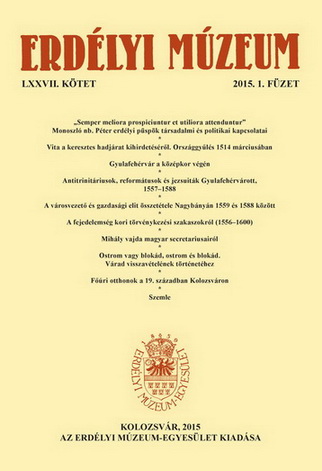
It’s a well-known fact that the court of the Royal Table became the principal royal conciliar court at the second half of the 15th century. The discussions usually took place during the judicial terms (generally four each year), the so-called octaves. The Royal Table of the elected king II. János Szapolyai has been mainly patterned after the medieval Table of the kings. The emerging new state’s characteristics, in particular the fact that it was composed of two slightly different regions (the so-called Partium and Transylvania with three privileged communities, Hungarian noblemen, Saxons and Szeklers) was reflected in the organization and the functioning of the Table. Different court sessions were held for the noblemen from Partium, for the Szeklers and for the noblemen of Transylvania. These octave courts (generally two for each privileged community) at the beginning of the studied period have started on the day of major feasts (Epiphany, St George, Lucae ev., Reminiscere) and from 1571 on the eighth day of these feasts, and they lasted around thirty days. The court sessions took place mostly in Gyulafehérvár (Alba Iulia), Kolozsvár (Cluj) and Székelyvásárhely (Târgu Mureș).
More...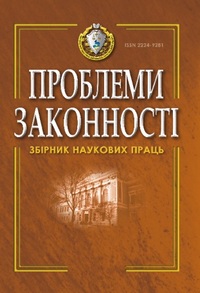
Problem setting: Recent trends of the science of history of state and law development are convincing evidence of the urgent need to improve and put in order all the methodological arsenal that is used. Sometimes the question is raised more radically: historical and legal science immediately needs its own means of scientific knowledge. This is due to the fact that in modern research on historical and legal subject-matter, that is extremely complex, a scientist needs a qualitative methodological tools acting primarily as a guideline in the vast historical and legal space. Comparative historical and legal method is able to be one of those guidelines which main difference from other comparative means of scientific knowledge is a flexible combination of comparative, historical and legal approaches. Despite the fact that this method is qualitatively different from the comparative and historical, and comparative and legal ones they have development history in common. M. M. Kovalevsky is considered to be the scientist who made the most weighty contribution to the working out of that methodological tendency of legal science. The work of this pre-revolutionary researcher in the field of legal comparative study is so fruitful that still remains a subject of attention of various legal disciplines, including the history of state and law science. Recent research and publications analysis: A lot of prominent history scientists and lawyers have repeatedly focused on M. M. Kovalevsky’s historical and comparative method. Furthermore, M. A. Damirli, V. T. Zonov, O. V. Kresin, M. N. Marchenko, N. Nikolaenko, A. H. Saidov, A. O. Tille, E. O. Skrypilyov, I. M. Sytar, G. V. Shvekov and others are among them. At the same time, despite the coverage of the individual elements of M. M. Kovalevsky’s comparative method in the scientific literature, the holistic view of its structure and functions of each of its components is not formed yet. Appropriate research using structural and functional approach is required. Paper objective: The purpose of this scientific paper is the structural and functional analysis of M. M. Kovalevsky’s historical and comparative method by isolating its elements such as the theory, methodology and research technique. As a result, this should allow to debate about the importance of this way of knowledge for the development of law comparative study as the subject matter at hand. Paper main body: In his work «Historical and comparative method in jurisprudence and ways of studying the history of law» M. M. Kovalevsky seeks not only to prove the importance of comparative way of knowledge for research in the field of law, but also provides initial theoretical and methodological reasoning of the new method. In the context of structural and functional approach to the content of M. M. Kovalevsky’s historical and comparative method it is already possible to single out its necessary elements such as the theory, methods and research technique, indicating the scientist’s attempts to develop a certain concept of use of this means of knowledge. In particular, he reveals the theory of his method by setting tasks of building the history of progressive forms development for living together and studying the history of law of one nation or another and also through historical and comparative approaches to their solution. In M. M. Kovalevsky’s work we can also find the principles of the research objectives use which are the basis of his method theory. Methods and technique of historical and comparative analysis subject to the requirement to compare the largest possible number of objects, in the form of legislation, that should belong to peoples which are close in their social development, and are specified in the appropriate practical recommendations. In addition, M. M. Kovalevsky directly indicates the possibility for involving other methodological ways during the comparative analysis to obtain new facts. Conclusions of the research: Estimating the M. M. Kovalevsky’s efforts in the methodology of historical and legal comparative study it should be noted that the attitude to his method in the scientific community is controversial. While agreeing, in general, with a positive appreciation of the M. M. Kovalevsky’s scientific heritage it should be pointed that the scientist first qualitatively tried to develop theoretical and methodological basis for the historical and comparative method in the domestic comparative study. Despite the fact that while theoretically reasoning his own method, M. M. Kovalevsky lacked modern structural and functional approach, but in most cases he was able to aptly describe the individual elements of the theory, methods and technique of the new means of special and scientific knowledge.
More...
Problem setting and relevance of the research topic. Research of courts of customary law is not a new trend in the domestic legal science. However, it should be noted that this issue was covered mainly in the historical and ethnographic aspect, and, as a rule, in relation to specific countries or peoples. Taking into account the fact that in some post-Soviet states the rules of the customary law have remained and take effect even under the current conditions, there is a need to study people’s judgment on the basis of historical experience, taking into account the fact that there is no special scientific research on this subject.Paper objective. On the basis of studying the courts of customary law that existed in the territory of the post-Soviet states, to reveal their diversity, special features and peculiarities of formation and to analyze the contemporary forms of the aforementioned courts.Paper main body. The courts of customary law existed in various nations and nationalities since ancient times. The identity of one or another traditional court depended on such facts as the territorial location of the community, the level of economic and cultural development, type of religion, etc.In this paper the organization of the traditional justice of post-Soviet states in the second half of the XIX century was studied, when the basic territorial boundaries of the Russian Empire were formed. It is within these boundaries the peoples lived, who subsequently became Soviet republics, and then independent states.The main characteristic features of traditional courts that existed in the territory of post-Soviet states have been emphasized (1) judicial procedure was not regulated in detail; (2) the rules of the customary law (adat rules) were the basis of the justice; (3) members of the court were competent persons of the community; (4) the court was common for all members of the community; (5) disputes were resolved through reconciliation of the parties; (6) the court could function as a non-judicial body and a constant one; (7) in the trial the evidence was as follows: actual recognition; material evidence; statements by witnesses; oath; (9) a special place of the court was established; (10) a court decision was binding.Conclusions of the research. At the present moment we can talk about the kind of reception of the institute of traditional (national) justice, which is supported both by the population of the relevant post-Soviet states and their public authorities. This fact is explained by the fact that the essence and purpose of the traditional justice, since its origin and up till now has not changed, and it is as follows: (1) authority of the court (judges); (2) ensuring harmony between a person and the society, based on the confidence of the members of the process in a fair solution of the dispute; (3) justice serves as a means of reconciliation, not as a tool of clear application of positive law.
More...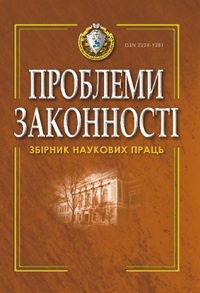
The influence of world globalization processes on the development of the religious legal systems has been analyzed in the paper. Globalization processes in the XXI century are regarding individuals, nations, and civilizations. Global transformations lead to qualitative changes in the socio-cultural relations and actualize a wide range of issues which are related to the formation of a new world culture. Modern globalization takes diverse range of public relations in its own orbit. The relationship between the legal systems in the twentieth century is some of the most important aspects of this process. However, the interaction of legal systems has significant differences from the interaction of economies of different countries. There are actual economic relations domination of Western financial and economic institutions and standardization of relevant rules. But the attempts to apply this approach to law lead to resistance to Western standards and the spread of major civilizational conflicts in different parts of the world. Globalization should be based on respect for cultural, religious and legal diversity. It has to ensure preservation of forced “Westernisation”. Significant differences in the impact of globalization on the convergence of legal systems of Western law (Romano-Germanic and Anglo-American) and their impact on religious legal systems of Muslim, Hindu and Jewish law must be emphasized. The religious legal systems are not exposed to other systems and the related changes. This is due to such features as the divine nature, increased stability, specific sources of law etc. An important issue that requires further study is the reverse influence which religious law exercises to secularized modern legal system.
More...
Problem setting.Current legislation does not adequately regulate using of alternative dispute resolution. The article emphasizes the need for amending existing legislation to ensure its compliance with international standards, its obligations in connection with the signing of the Association Agreement and ensure efficient use of alternative dispute resolution (hereinafter - ADR) party relations.Recent research and publications analysis. Problems of alternative dispute resolution were viewed in their works viewed N. Bondarenko-Zelinska, Y. Pritika, O. Spectr, A. Shypilova, V. Yakovleva and others.Paper objectiveThe article goal is to analyze the proposals of the Constitutional Commission in the field of justice, as well as analysis of bills related to ADR, research of problems of legal regulation, which will help optimize procedures and improve the law in general.The paper main body.Realization of economic, political, governmental, legal and other reforms in society lead to a significant strengthening of social and legal tensions, the emergence of a large number of conflicts in the legal field. Traditionally, parties use courts that are organized and funded by the state in order to protect rights and legal interests. However, justice for many obvious advantages has several disadvantages: a large workload of courts, length and complexity of the proceedings, considerable legal costs not properly worked out mechanism of the principle of competition and equality.Conclusions of the research.Problems of alternative dispute resolution in domestic legal literature are mostly synthesis and theoretical. Various alternative forms, procedures, and methods are used by foreign countries, along with the traditional proceedings. They do not replace justice and do not deprive the persons right for judicial protection. Instead, give them a choice between public or non-governmental (private) forms of resolving legal disputes, allowing parties to decide which type of procedures will help to resolve specific legal dispute.
More...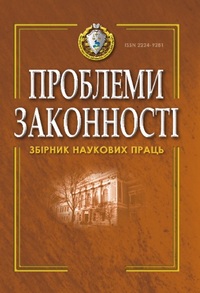
Problem setting. The purpose of public control in a democratic state is cleared in this article; its legal basis is defined. The fact that all actors without public powers are the public control subjects is pointed. In this regard, noted that public control is carried not only associations (organizations), but unorganized public. Associations are classified as public control subjects; the characteristics of some of them (community organizations, the media, trade unions, political parties and others) are showed. The conclusion about inappropriateness of attribution local authorities to public control subjects is made.The article clarified the purpose of social control in a democratic state, which is to ensure the optimization of real national sovereignty and governance. Determined the legal basis of public control, analyzed articles of the Basic Law, dedicated to guaranteeing the rights of participation in the rule of public affairs.Paper objective. It is noted that the subjects of public control can act, all participants of social relations that are not endowed with public powers. In this regard, it stresses that public control is carried out not only by non-government associations (organizations), but unorganized public.Paper main body. The classification of NGOs as agents of public control based on the following criteria: the need for formalizing the establishment, purpose and functions, the nature of authority, area of activity. Shows the legal characteristics of individual types of organizations (community organizations, the media, trade unions, political parties, etc.).It is emphasized that each of the associations mainly with certain sectors of public life, which, unlike political parties or trade unions, are not limited to political activities or protection of socio-economic rights of workers. Their activity also extends to humanitarian, informational, environmental, security and other areas of social and political life of Ukraine.Conclusions. The conclusion of the feasibility of assigning local authorities to the subjects of public control over state power, as they are part of the public authorities and in this respect are themselves subject to public scrutiny.
More...
Problem setting. Development of any scientific method is always both a question of its structural and functional characteristics and place in the system of scientific methods, and a comment as for practicability of such methodological work. This paper attempts to give a detailed response to the major comments and objections arising in respect of the separation as an independent means of special and scientific knowledge of comparative historical and legal method.Recent research and publications analysis. Analyzing research and publications within the theme of the scientific article, it should be noted that attention to methodological issues of both general and legal science at the time was paid by such prominent foreign and domestic scholars as I. D. Andreev, Yu. Ya. Baskin, O. L. Bygych, M. A. Damirli, V. V. Ivanov, I. D. Koval'chenko, V. F. Kolomyitsev, D. V. Lukyanov, L. A. Luts, J. Maida, B. G. Mogilnytsky, N. M. Onishchenko, N. M. Parkhomenko, O. V. Petryshyn, S. P. Pogrebnyak, V. I. Synaisky, V. M. Syryh, O. F. Skakun, A. O. Tille, D. I. Feldman and others. It should be noted that, despite a large number of scientific papers in this field, the interest of research partnership in the methodology of history of state and law science still unfairly remains very low.Paper objective. The purpose of this scientific paper is theoretical and methodological rationale for the need of separation and development of comparative historical and legal method in the form of answers to more common questions and objections that arise in scientific partnership in this regard.Paper main body. Development of comparative historical and legal means of knowledge is quite justified because it meets the requirements of the scientific method efficiency, which criteria are the speed for achieving this goal, ease of use of one or another way of scientific knowledge, universality of research methods, convenience of techniques that are used and so on. Combining the three research approaches – comparative, historical and legal, comparative historical and legal method is more effective than two separate methods - comparative and historical, and comparative and legal. Epistemological potential of comparative historical and legal method is quite great, and is to ensure the integrity and continuity of the historical and legal knowledge that is carried out in comparative way. Application of this method allows you without breaking the research itself into separate semantic blocks to start and continue it both from the analysis of the "historical" and learning of the "legal".Conclusions. Value of the comparative historical and legal method in the methodology of historical and legal science will be very significant. This can be explained by the fact that this means of knowledge allows to go beyond the known and look from a different angle on already known facts and regularities of the state and legal development. In fact, a comparison in the field of the history of state and law is one of the few methodological tools capable to do away with the stereotype which has been formed in the historical and legal science recently. In addition, comparative historical and legal method can serve as the epicenter of all the research methodology, but the comparative analysis can be the main problem of scientific work with the production of relevant tasks. Comparative historical and legal method as a basis of a study directly causes its scientific novelty, because in the course of comparison of historical and legal objects those of their characteristics and features that were previously unknown are revealed, and new laws are opened.
More...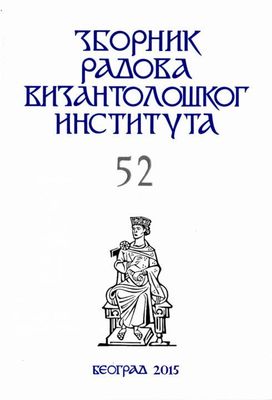
The first part of this paper is dedicated to the definition of the agreement to exchange (permutatio) and emphasizes the difference, made by Roman lawyers, between exchange (barter) and sale (emptio-venditio). The second part analyses Byzantine legal sources that mention this old contract, while the third part is dedicated to Serbian legal documents. In Serbian legal documents the exchange was mentioned as the agreement between a monarch and a monastery or a natural person (individual), concerning donations that were given to the Church.
More...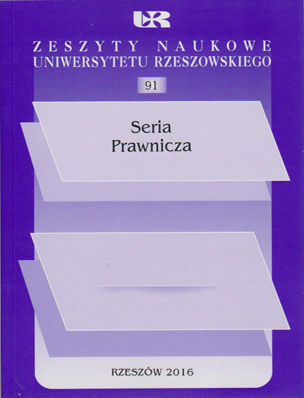
The Article presents the scope and structures responsible for implementing the external oversight over the functioning of foreign intelligence of the State Security Committee (attached to the Council Ministers) of the USSR in the years from 1954 to 1991. In addition to discussing the role of the First (General) Secretary of the Central Committee of the CPSU and the official „custodian” on behalf of the Secretariat of the CC there are also characterized the functions and internal organization of these departments of the Central Committee, which belonged to the system of oversight of the KGB intelligence: Administrative Organs, International, Liaison with the Communist and Workers Parties of the Socialist Countries, International Propaganda and Cadres Abroad. There are also presented their staffing personnel. The fundamental source base are the reports of the U.S. Department of State and the Central Intelligence Agency from the years 1960–1989 on the structure, staffing, and address data of all the supreme and central organs of the party and states of the USSR, supplemented by (available for several years on the Internet), fragmentary reports of the CIA with respect to this problem. There also is used the official collection of documents published in the Russian Federation, biographies of high officials of the KGB, as well as the established there in 2008, website includes an impressive collection of data on the history of the Russian and Soviet Communist Party from the years 1898–1991.
More...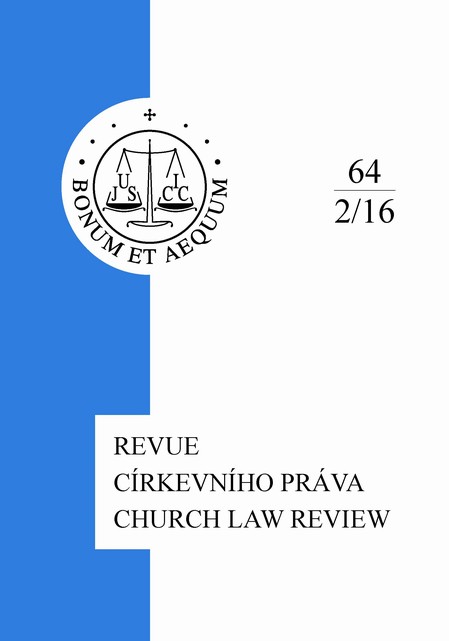

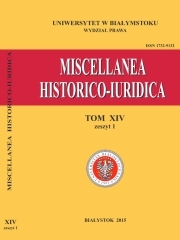
After WW II, the Supreme Court functioned pursuant to the Law on the Organization of General Jurisdiction Courts of 1928 as a court of cassation (kasacyjny) – and after the 1949–1950 reform of the court system – as an appellate (rewizyjny) court. As a consequence of the politically-motivated appointments prevailing from the mid-1940s to mid-50s, the justices of the interwar period were replaced by new judges at the disposition of political power and executive authorities during the Stalinist period. The thaw in relations of October 1956 led to a temporary alteration of the Supreme Court’s functioning and the approach developed in judicial decisions. By 1958, the direction adopted in the judicial decisions of criminal courts had already begun to raise serious doubts among the Polish United Workers’ Party (PZPR). This fact spurred legislative work, which was completed with the enactment of the Act of 16 February 1962 on the Supreme Court. The Act was the first separate piece of legislation concerning the Supreme Court in the history of the People’s Republic of Poland (PRL). It conformed with the 1952 Constitution of the PRL in recognizing the position of the Supreme Court as the supreme judicial authority exercising supervision over all other courts of justice as far as judicial decisions are concerned, and in stablishing the principle that Supreme Court justices be elected for a 5-year term. The systemic changes of the law necessitated the election of the entire bench of the Supreme Court, which allowed for a verification of the existing justices and the election of those who guaranteed a new approach to criminal law that accorded with the expectations of the party.
More...
The May Coup d’´Etat of 1926 was a turning point in the activity of the Supreme Administrative Tribunal (Najwyższy Trybunał Administracyjny – NTA), in that it undermined the position of judges associated with the former Austrian Administrative Tribunal. Guarding the standards of Rechtsstaat the judges could not tolerate violations of law on the part of the government, e.g. the appointment of a General Election Commissioner in 1927. In particular, they couldn’t accept the behind-the-scenes pressure on an independent judiciary. The displacement of Jan Sawicki, president of the NTA, was a warning for all judges and a prelude to mass personnel purges. The reform of the administrative judiciary from 1932, as opposed to former reforms, completely ignored the reorganisation plan proposed by R. Różycki, another president of the NTA not backed by the new government. The task of reforming the NTA was delegated to people who were trusted by the new government (Sanacja).
More...
Jan Baszkiewicz, the eminent political and legal thought historian, in the years 1959–1968 was associated with the University of Wrocław, working at the Faculty of Law and Administration. The nine-year Wrocław period was very important in Jan Baszkiewicz’s life. First employed at the Chair of General History of State and Law and, later, at the Chair of History of Political and Legal Doctrines, Jan Baszkiewicz can be deemed the father of the Wrocław history of political and legal doctrines. For didactic purposes, he developed academic course materials on the above subject, on which History of Political and Legal Doctrines, published together with Franciszek Ryszka in 1969, was based. It was the first Polish academic textbook fully discussing the history of political and legal thought from antiquity to contemporary times. During his stay in Wrocław, Jan Baszkiewicz published Sovereign State in the Feudal Political Doctrine until the Early 14th Century (Warsaw 1964), one of the most significant studies among all of his scientific achievements, which has later become a classic of the genre and strengthened Jan Baszkiewicz’s position among Polish state and law historians. He also performed important organisational functions. In 1960, Jan Baszkiewicz was appointed the Head of the Department of Political Doctrines, and, in 1963, of the Chair of Political and Legal Doctrines. From 1962 until 1964, he was Deputy Dean for Didactics of the Faculty of Law. In September 1965, Jan Baszkiewicz was appointed Deputy Vice-Chancellor for Academic Affairs and Youth of the University of Wrocław and fulfilled that role through to the March 1968 Polish political crisis. Due to the attitude he demonstrated towards that situation, he was forced to move from Wrocław to the University of Silesia in Katowice. In 2003, the University of Wrocław conferred an honorary doctorate upon him.
More...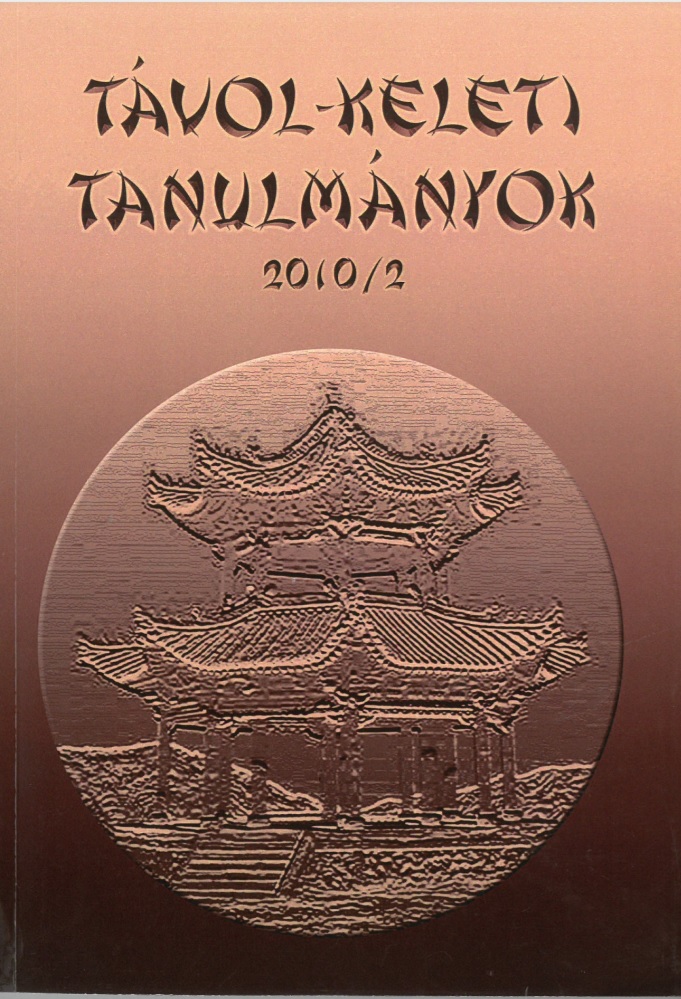
When the Han dynasty was established in 202 B.C, it inherited a sophisticated system of criminal law from the Qin dynasty. According to recently found manuscripts, such as those unearthed in Zhangjiashan, the legal system has not changed much in the first decades of the Han dynasty. The system of punishments was rather complicated: it included different forms of the capital punishment, mutilations, forced labour and other means of retribution. The first significant reform of the system of punishments was introduced by Han Wendi (r. 179–157 B.C.). His reforms were propagated as humanitarian acts that mitigated punishments, and abolished mutilations. However, in practice, the changes brought about the aggravation of penalties in many cases, and some forms of mutilation were actually converted to death penalty. Thus, while propaganda stated that punishments were made lighter, they were in fact made stricter. As a result, Han Wendi’s son, Han Jingdi (r. 157–141 B.C.) introduced a set of new reforms. The article describes the system of punishments of the Han dynasty prior to and following the reforms of Han Wendi, based on traditional and newly found sources; then goes on to analyse the reforms of Han Wendi as described in the Xingfazhi chapter of the Hanshu. The study makes it clear that the legal system is never ‘ready’, it needs continuous improvement and modification toadapt to the changes of times, and that there is always a difference between the intention of lawmakers and the actual implementation of laws.
More...